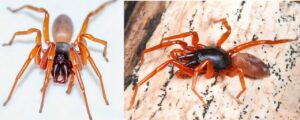Over the last 12 months, scientific breakthroughs have ranged from the sublime to the ridiculous. At the start of 2023, we had no idea that starfish are essentially bodiless heads, that whales are the fashionistas of the sea, or that there was more than one way to make a “mermaid” mummy.
It is a year that saw India beat Russia to the Moon, wildfires blaze across Canada, and NASA make oxygen on Mars. Earthquakes raged across Iceland, orcas hit the headlines repeatedly, and plans to bring back the dodo are full steam ahead.
There have been discoveries about every facet of our planet, its history, and the universe we are part of. Some are tales of caution, others are of great innovation, and some will simply put a smile on your face, like the selfie-taking bear.
There were hundreds to choose from, but here are our 10 science stories of 2023.
Incredible hunting techniques
1) Never-Before-Seen Wolf Predation Caught on Camera: A wolf in Alaska’s Katmai National Park was caught on camera with an interesting prey species. The wolf dragged a harbor seal to shore where it subsequently killed and ate it.
People suspected that the canines were hunting in this way because, in the High Arctic, wolves patrol cracks in the sea ice. However, this was the first time anyone had filmed the feeding behavior. Researchers have also spotted wolves carrying dead sea otters.
2) Two Orcas Kill 17 Sharks in One Day: In February, an infamous pair of orcas in South Africa once again made headlines. The killer whales have a penchant for killing sharks. On this particular day, they slaughtered 17 sevengill sharks.
After killing the sharks, they only ate the livers. After snacking on the large, nutrient-dense organ, they left the rest of the carcasses floating in the sea.
Whales love hats
3) Scientists Crack Case of Whales with Kelp Hats: Observers have witnessed at least four species of whale wearing kelp hats and a new study showed the behavior was far more widespread than they initially thought. Baffled scientists wanted to find out why whales were doing this.
The scientists concluded there were two likely reasons for the behavior: the whales are playing with the seaweed for fun, and that it feels nice on their skin. The whales could be using it to help get rid of lice and barnacles, and possibly for the tickling sensation.

A humpback whale twirls through kelp. Photo: Slater Moore/Awesome Ocean
4) DNA Unravels Origins of Ancient Picts: The 8th-century scholar Bede the Venerable said that the Picts were immigrants to Scotland. He speculated that they came from Eastern Europe. Historians questioned this assumption but could not prove where the Picts came from. New DNA analysis reveals that the Picts were not immigrants after all, but a subgroup of Celtic people.
5) ‘Mermaid’ Mummy Discovered in Japanese Temple: In 2022, researchers came across a mummified “mermaid” in a Japanese temple. After being granted permission to study it, they discovered how the mermaid was made.
The researchers were surprised to find it had not been constructed in the same way as PJ Barnum’s famous Fiji mermaid. Instead, the elaborate hoax consisted of a paper maché body and head. This was coated in sand, charcoal paste, and pufferfish skin, then attached to a fishtail. To make it look more realistic, the creator used jaw bones from an unidentified mammal when creating the mermaid’s mouth. Radiocarbon dating suggests it was made in the early 1800s.
A face from the past
6) Reconstructing the Face of a 7th-Century Teen: A forensic artist in the UK reconstructed the face of a 7th-century teenage woman. Thought to be around 16, the woman was wealthy and may have been one of the first converts to Christianity in the region.
The research team used isotopic tests to reveal details of the mystery woman. She moved to England when she was a young child, and the move coincided with a big shift in her diet. This shift could have been one of the reasons for her premature death.
Based on the analysis, this is what she looked like.

Reconstruction of the young woman’s face. Photo: Hew Morrison
7) Camera Catches Deepest Ever Fish: In August, a scientific expedition caught a Pseudoliparis (snailfish) on camera 8,336m below the surface of the sea. This makes it the deepest-dwelling fish ever discovered.
The fish was seen in the Izu-Ogasawara Trench in southeast Japan. The species seems to thrive at this depth, despite the immense pressure (800 times that at the surface). As the submersible was heading into the trench, it captured a number of these fish below 8,000m.
8) Drought Exposes Ancient Italian Treasures: This summer, Europe was plagued by heatwaves and droughts. One silver lining was the appearance of sunken treasure in lakes and rivers when water levels dropped.
As the Tiber River dried up, the ruins of Nero’s Bridge became visible. Emperor Nero was a controversial figure, known for building grand public structures. However, there is some debate about whether he built this bridge. Some think it existed before his reign.
Do we need to worry about these supervolcanoes?
9) Are Two Supervolcanoes Waking Up?: Volcanoes in California and Italy are starting to worry those living nearby. Seismic activity has increased and people are concerned that the volcanoes are waking up. Both are supervolcanoes, meaning that at some point they produced a V8-scale eruption. Unlike regular cone-shaped volcanoes, past eruptions have turned these volcanoes into huge depressions.
Fortunately, scientists don’t believe they are an imminent threat.

Rendering of an asteroid near Earth. Image: Shutterstock
10) New Moon Discovered Orbiting Earth: Astronomers have discovered a new natural satellite orbiting Earth. Earlier this year, the Pan-STARRs telescope that sits on top of Hawaii’s Haleakala volcano detected a quasi-moon.
Although it does journey around our planet, the quasi-moon is tremendously far away, 2.57 million kilometers to be precise. For context, our moon is 0.38 million kilometers away. Though much further away and much smaller, it still only takes 365 days to orbit Earth.






